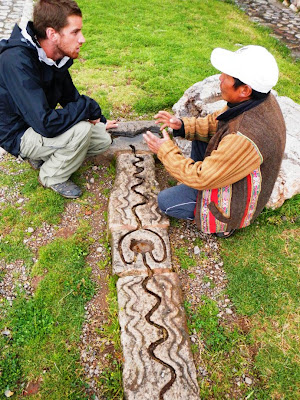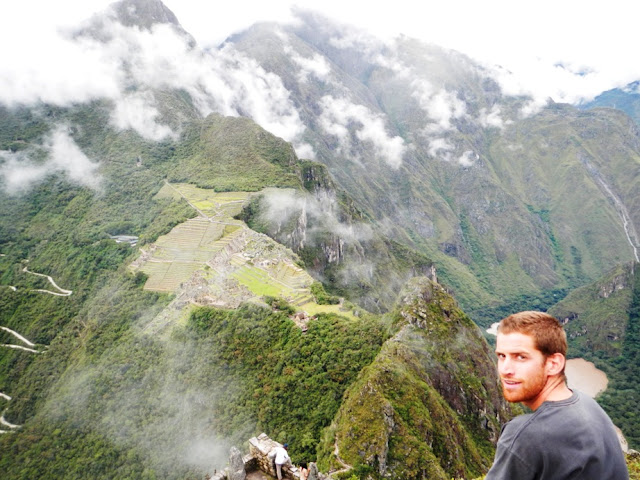Megan: Pisac to Cusco was a bit of a rough drive because we were both getting sick from our jaunt up Machu Picchu and it was my first attempt at a short car ride minus gravol. Things didn’t turn out so well with this experiment and the result was an abrupt roadside stop and a nice view of breakfast. Back in Cusco the city was bubbling with its usual mix of grime and loveliness. It was awesome to be immersed in Inca history and the later colonial influence. We checked out Museo Inka on our way out of town and saw our first mummies ever! They looked a bit different than originally imagined—the Inca tied up their dead with their knees tucked up to their chest and palms placed on the side of their face. This position makes it look like the person was terrified, screaming, and in agony at the time of death. Unfortunately we don’t have any pictures to verify since they weren’t prohibited in the museum. In addition to the mummies, we saw a lot of other really old stuff: ceramics, stone work, textiles, paintings and artifacts documenting the bloody colonial invasion.
 |
| Road Hazards--rocks and centerline straddling buses |
We were getting a bit tired of the rain and clouds so decided to head back towards the coast. Instead of taking the same way back through Arequipa, we took the less popular path to Nazca. Iain read that this road had been closed for 10 years due to rebel activity by The Shining Path. Luckily for us, the road is fine in the bandit sense, but high rains still pose a potential danger. Nothing too crazy happened to us, but there were many rocks and boulders on the road and rivers spewing out to the highway. We were lucky we didn’t have any problems, although Iain confirms it was the craziest mountain road he has driven to date.
 |
| One of many river crossings |
 |
| Parade? To me Road Hazard |
 |
| Road Food--Peanut Butter/Nutella/Banana sandwich |
 |
| River nearly breaching over the road |
 |
| View From the Passenger Window of the 'Road' |
 |
| View From the Drivers Window |
 |
| Oops.. |
Thanks to Iain’s superb driving abilities we arrived unharmed! Nazca was a bit disenchanting and bad thing seemed to be happening to us there. First, we couldn’t get breakfast anywhere, even though we checked it out the night before and it seemed every street corner served breakfast. Typically we don’t eat breakfast out so this was even more frustrating. This shouldn’t have really been a big deal, but supper was a disappointment the night before, it was very hot out, and we were getting ‘hangry’ (anger and or moodiness that develops due to hunger). After locating food, things continued to work against us. I bailed in slow motion UP our hotel stairs (which would have been very humorous to witness) and Iain razored a bald spot smack front and centre of his head while trying to give himself a haircut. We took these as signs it was time to leave.
The main attraction in Nazca is the Nazca lines which consist of 800 straight lines, 300 geometric figures and 70 images of plants and animals. They are a mystery to researchers who have proposed several theories as to their purpose over the years. Going rates for flights over the lines cost about $50, but we opted out and checked out the mirador (lookout) for about almost nothing.
Iain: The next stop was Huacachina, an oasis on the outskirts of Ica. Huacachina is known for its impressive sand dunes surrounding a laguna. Sand boarding is very popular here, with two competitions every year ranging from Big Air to a 9 second Slalom decent. Megan and I signed up from a sand boarding trip in a ‘boogy’. Boogys happen to be old gas guzzling Suburbans and Broncos which have been stripped down and rebuilt with roll cages, axel reinforcements and driven by a driver who lives on the edge of insanity. Our first decent on the sandboards was a humbling experience- I built up speed and suddenly faced planted with authority. Megans decent was quite similar. After the third run we had gotten the hang of it. On the way back to the town I opted to try the locals ‘kicker’, a hand built sand jump. I asked politely if I could try their jump and if they could give me any last minutes tips on the topic. They asked how much sandboarding experience I had, I exaggerated and said all day (more like 30 seconds) so with a bunch of safety tips they gave me the go ahead. I managed to get down to the jump without face planting so I figured I’d better make it worth it and to the locals surprise landed a trescientos sesenta (360 degree spin). Excited I climbed back up and added a tail grab to the spin. Imediately I became a town hero and was invited to a free day of boogying/boarding and asked if I would coach, judge and compete in the up coming competition. A boogy mechanic has offered to buy our car at the end of our trip, we just need more information on the paper work.
Next stop Asia.. Peru.
 |
| Huacachina |
 |
| Huacachina at Night, Ica in the background |
 |
| Stuck Boogy, Driver digging it out with a Sandboard |
 |
| Our Boogy/Sandboard shuttle |
 |
| First Decent |
















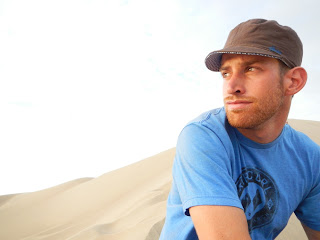


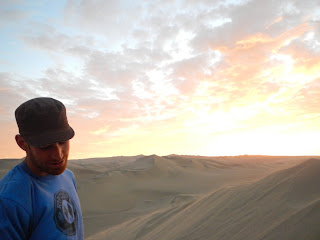


+of+DSCN1849.JPG)








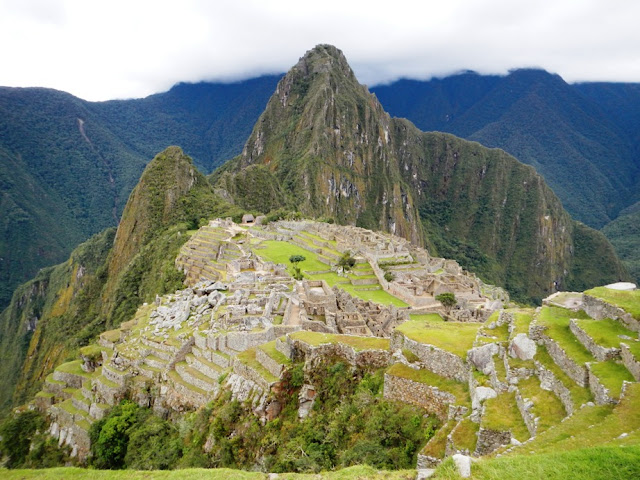+of+DSCN1422.JPG)









